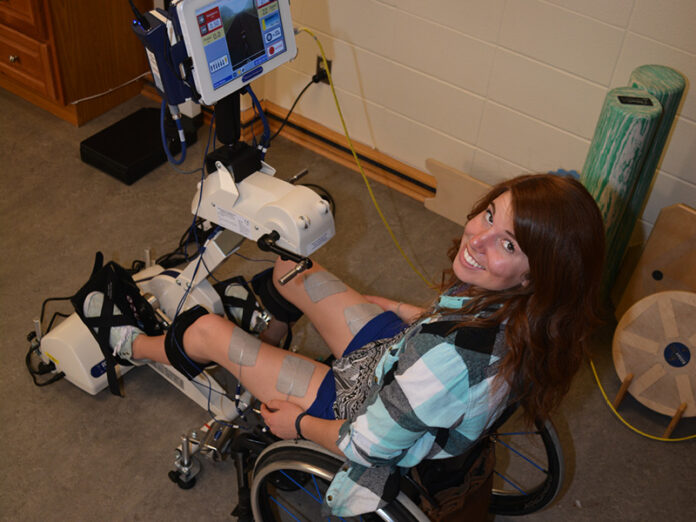
Amanda Timm lost the use of her legs in a horrific ski crash four years ago, but thanks to rare piece of revolutionary technology, Timm can ride a bike.
“It’s so exciting to know you can feel your muscles moving, that they haven’t withered away,” she says, watching her paralyzed limbs push the functional electric stimulation bike pedals at the University of Calgary’s Thrive Centre. The $32,000 bike can provide a cardiovascular workout for those who have lost use of their limbs due to conditions such as paralysis or multiple sclerosis.
In Timm’s case, the 21 year-old student and sit-ski racer is able to generate a steady low-watt output that stresses her cardiovascular system and reduces the atrophy in the muscles she cannot feel. Electrode pads on her quads, glutes and lower back are controlled by a computer and fire in sequence so her legs drive the pedals of the FES bike in a cycling motion. She works up a sweat in three hour-long sessions each week.
Dr. Chester Ho, Chief of Physical Medicine and Rehabilitation at the U of C, says there is a higher incidence of cardiovascular disease in people who suffer paralysis.
“The simulated cycling motion can give a good cardiovascular workout,” says Dr. Ho. “It can help keep people healthy and improve their quality of life.”
Timm was paralyzed from her abdomen down after a so-called T6 spinal cord injury when she caught an edge on a cliff jump and struck a tree in a big-mountain ski competition in Fernie, B.C.
“It’s a benefit in every way. I don’t have to worry as much about my muscles breaking down and things like bed sores,” she says. “This helps keep me healthy and moving.”
The F.E.S. bicycle is set up at the University of Calgary’s Thrive Centre. Two other bikes are at Calgary’s Foothills Hospital and a fitness facility at Spinal Cord Injury Alberta for public use.
















